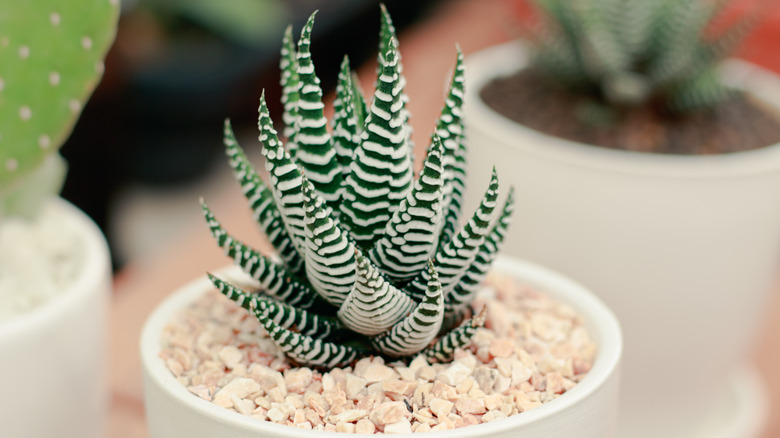This Eye-Catching Succulent Is Perfect For Beginners To Grow Indoors
A houseplant is a great way to liven up your space. While a plant can help you relax, some can be notoriously hard to keep alive. If you've never cared for a plant before, your best bet is to choose a low-maintenance plant that's easy to care for. This will set you up for success as a first-time plant parent, and then you can move on to a wider range of plants once you've developed a green thumb.
A striking succulent that is perfect for beginners is the zebra wart haworthia. The haworthia is a small succulent that's native to South Africa with a striking zebra-like pattern on its leaves. It's notoriously one of the easiest plants to take care of, as it can thrive indoors with minimal effort. Not to mention, it's very cute. It won't die — even if you make a few mistakes or leave it while you go on vacation for a couple of weeks.
Why the zebra wart haworthia is perfect for beginners
Plants are considered easy to care for when they don't need much water, can thrive in low light conditions, and are resistant to disease and pests. The zebra wart haworthia is small, growing only to eight inches in height. So, it doesn't require much space and can be grown in any kind of container. Zebra warts don't require a lot of water. In fact, these plants can go several weeks — or more if you live in a humid environment — without watering.
Zebra wart haworthia is tolerant of low light conditions. So, you can place it in a corner or a dorm room without much light, and it will be fine. These plants can even be placed under artificial light. Haworthia plants are generally resistant to most pests and diseases, except for mealybugs, which can be taken care of easily with a houseplant insecticide. Zebra warts are not harmful to pets. So, if you are a pet parent, this plant is a great choice.
How to take care of your zebra wart
Zebra warts thrive with bright light, but not direct sunlight. They also do well in medium and low light conditions. If you do place them in the sun, make sure they aren't exposed to direct sunlight in the afternoon as this can burn the leaves; a south or east-facing window is best for these plants. You can grow haworthia outdoors in partial shade, just make sure you bring them inside when it gets colder and dry out. Also, take note — they are not drought tolerant.
Make sure you choose a container for your zebra haworthia that has drainage holes, and water your zebra plant using distilled water every two to three weeks. You'll know it's time to water again when the soil has completely dried out. If you water too frequently, it will damage the root system of your plant. Zebra plants don't need much fertilizer, and too much can damage these plants. Fertilize once in the spring and again in the fall.


